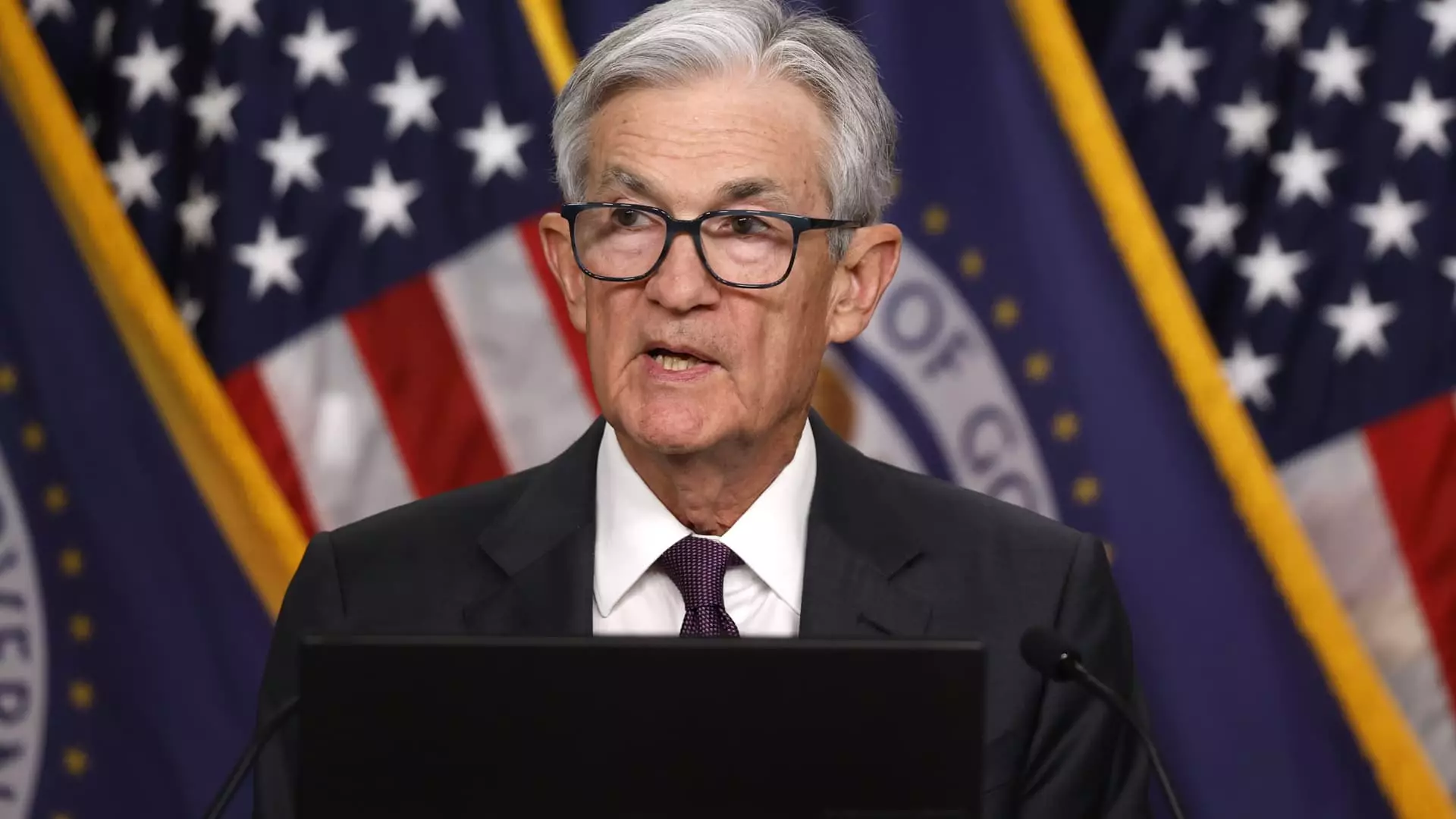The Federal Reserve’s decision to maintain its key interest rate between 4.25% and 4.5% reflects a climate rife with uncertainty, further complicated by the unpredictable trade policies emanating from the Trump administration. This preemptive stance is anything but ordinary; it signals an economy that is struggling to find its path amid external pressures. The Federal Open Market Committee (FOMC) is treading carefully, balancing the dual mandate of promoting maximum employment while ensuring price stability. However, the Fed’s cautious approach raises pertinent questions about the efficacy of monetary policy in a turbulent political environment where tariffs and trade discussions loom large.
Chair Jerome Powell’s remarks during the post-meeting conference hinted at these complexities. He emphasized the “two-sided” risks faced by the economy, capturing the anxiety that has seeped into financial markets. Investors, while momentarily buoyed by any positive news, are left grappling with the reality that the economy’s health may pivot on the whims of trade negotiations. The horizon is clouded with the potential for disruption—a hallmark characteristic of this administration’s erratic approach to economic governance.
The Threat of Stagflation Revisited
Disquietingly, there are echoes of a bygone era as concerns of stagflation reemerge. With tariffs serving as a double-edged sword—potentially inflating prices while simultaneously hampering economic growth—the specter of stagflation has dawned, reminiscent of the critical economic instability experienced in the 1980s. The looming question is whether the Fed is prepared for such an eventuality, and more importantly, if they even can navigate it effectively.
The tariffs, predictably, are a focal point for inflationary pressures. While the Fed has long favored monetary policies that nurture growth, these circumstances complicate their mission. The balance they must maintain is increasingly difficult, as external factors exert downward pressure on output and upward pressure on prices. This predicament not only challenges economic assumptions but also tests the limits of fiscal responses in an environment characterized by ideological and economic polarization.
Consumption vs. Inflation: The Crossroads of Consumer Sentiment
The economic indicators often draw conflicting narratives, with Gross Domestic Product (GDP) contracting by 0.3% in the first quarter yet projections suggesting growth in the ensuing quarter. Consumer spending—a critical driver of economic vitality—has evidently strained under the weight of fluctuating import prices and apprehensive sentiment. Business managers express unease regarding forthcoming supply and price changes, indicating a broader eroding confidence across various sectors.
From a liberal perspective, the potential ramifications of trade policies on consumer behavior are particularly concerning. The administration’s approach threatens to hinder consumer choice and increase living costs, disproportionately affecting working-class families. Conservative fiscal ideologies should find it troubling that government interventions, like tariffs, may ultimately stymie the very growth they purportedly champion through “America First” proposals.
The Fed’s Dilemma: To Cut or Not to Cut?
With inflation appearing subdued and nearing target levels, the Fed’s challenge is twofold: How to respond to President Trump’s pressure for rate cuts while also considering potential inflation spikes as tariffs persist? The market has demonstrated volatility regarding policies, with traders displaying uncertainty about rate reductions and their timing. Initial indicators suggested minimal likelihood for immediate cuts, yet speculations persist—some forecasting three reductions for the year. This inconsistency feeds into a broader cycle of instability, exacerbated by mixed signals emanating from both Wall Street and Washington.
Moreover, the one-size-fits-all approach to interest rates overlooks crucial regional disparities and sector-specific needs. While rates impact overall economic activity, local economies may require differentiated policy measures. The central bank’s attention should shift from an overly generalized focus to tailored interventions that address the unique challenges faced by various industries and regions, particularly those adversely impacted by trade tariffs.
A Broader Look at Economic Sentiment
Behavioral economists understand that economic sentiment influences decision-making. The palpable anxiety stemming from trade negotiations sends tremors through markets, yielding a cautious approach not only from investors but also from everyday consumers. Many are re-evaluating their spending decisions—an action that could stymie the growth trajectory that the Fed strives to maintain.
As consumers remain wary, their willingness to spend becomes undeniably linked to the state of trade discussions. If the administration wishes to stem the tide of economic uncertainty, a more transparent trade strategy that fosters confidence among both consumers and businesses is essential. The stakes are high; continued inaction or erratic policy could yield undesired consequences far beyond the immediate scope of tariffs and trade.
Economic discourse today must embrace a more thoughtful engagement with data, social implications, and the realities of a politically charged landscape. As the Federal Reserve navigates this intricate web of challenges, the essential question remains: Can stability be restored in such turbulent waters?

